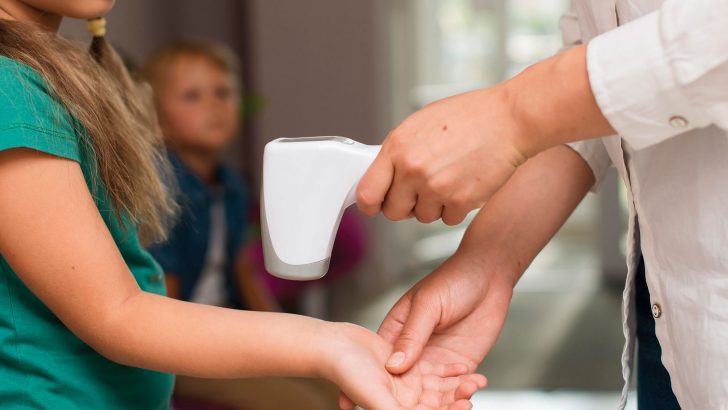A sense of normality is important to settle children into the school routine writes Ruadhán Jones
The balancing act of home-schooling and working will finally come to an end for many as children are set to return to school in September. Unsurprisingly, parents are very keen for their kids to get back to a semblance of normality – even if it is the ‘new normal’.
Barnardo’s ‘Back to School Survey’ found that over 90% of parents believe it is important for their children to return to school for their emotional and social development, and mental health wellbeing. A significant number said balancing work and home-schooling was difficult.
Similarly, primary and secondary level students said they missed their friends and many missed their teachers too. But while some were excited about the return to school, “others worried whether they would be safe, would they pass the virus on to loved ones, or how would social distancing work,” the report says. “Some also worried about the impact on their learning and exams.”
There is that lingering sense of worry, in parents and in children, as to how all this will pan out. Two out of five children said they feel positively about returning to school; but one in five feel negatively. Of parents, 16% don’t want their children to return to school due to fears over the coronavirus.
For parents and teachers, how they can help children overcome and manage their concerns will be an important part of the back-to-school experience. It can be a hard transition at the best of times, so here a few ways you can help make the experience as smooth as possible.
Getting in the rhythm
While we have heard much about the new normal over lockdown, it’s almost a relief to have such old-normal concerns to deal with. It’s been a long summer, longer than usual, and children have become accustomed to days spent on their own terms – up to a point.
Extra screen time, some late nights and long sleeps and no homework are only a couple of the summer routines children may have established. Once it gets on two weeks to go, it’s time to set up the school routine.
Start slowly, picking out one or two habits and easing them out. It could be setting up a regular breakfast time to get them used to the school pattern in advance. Reducing screen time will be a step on the road as well to make room in the week for homework and extracurricular activities.
It takes four to six weeks on average for children to make the adjustment, so don’t be concerned if the first week is still a struggle. On the other hand, given that children have been away from friends and social outlets for so long, it might be that they’re only too happy to be back!
Hopes and concerns
That leads on to the second point, which is communicating hopes and concerns. As the Barnardo’s survey highlights, both parents and children are likely to have mixed feelings about returning. That’s perfectly understandable and will take on different forms for different people.
Communicating with our kids will be important, then, to check how they are feeling about being back to school. Be careful how you do this – the aim is to find out if they are worried, not to plant new ones. Take a bite-size approach, making time for little conversations to listen to them and provide reassurance if necessary.
Where possible, take into account their fears and explain what they can do to combat them. For example, it’s normal to feel worried about the virus, but here’s what you can do… If that is not possible, try to turn a negative into a positive – I know you don’t know many people there, but you will have loads of time to make new friends.
Be prepared for young kids in particular to ask the same question repeatedly. They will often need extra reassurance, in such volatile circumstances, that nothing has changed.
Honesty is key
Be honest and upfront with your children about the ways in which going back to school will be different. It’s better that they know beforehand and most likely they will have some idea already.
Be prepared to clear up misunderstandings and explain how the restrictions or alterations are there to help. If you know the teacher or the classroom they will be in, make your responses specific – Mr So-and-so will help you get used to it. If not, then keep your directions short and simple.
Not everything will have changed, however, and so appealing to these instances of normality can help reassure children. This could be the same teacher from the previous year, the same class or friends, the same subjects and so on.
Know the facts
In order to be best prepared for these conversations, you will need to keep up to date with the Government’s requirements. Schools will also have their own specific regulations, so get in contact with them or check the school website for any necessary information.
The basics are that neither children nor teachers will wear masks in a primary school setting and that the younger classes will not be required to social distance. In secondary schools, children will have the option to wear masks if they need to, but it is not required. A one metre distance will be maintained between students from 3rd class up.
You can also normalise actions such as proper hand washing or covering sneezes by making them part of your daily routines at home. The most important word is normality – try to make the school year as close to normal as possible so that children can focus on learning and socialising.
Supporting wellbeing
In her Back to School publication, Minister for Education Norma Foley identified five key principles which she is asking schools to bear in mind when reopening. It’s worth bearing these in mind when you are talking to your children, keeping you and the school on the same page.
The five key principles are:
- Promoting a sense of safety – so that people feel that they are safe, and that those around them are safe.
- Promoting a sense of calm – so that people feel relaxed, composed and grounded (regulated).
- Promoting a sense of belonging and connectedness – so that people experience having meaningful relationships with others who understand and support them.
- Promoting a sense of self-efficacy and community-efficacy – so that people believe that they can manage and do what is needed, and so can their school community.
- Promoting a sense of hope – so that people believe that things will work out well.
A sense of calm
It’s natural for parents to feel some level of anxiety about their children returning to school. It’s a good idea, however, to maintain a level of surface calm when conveying details regarding social distancing and the risks of covid.
Kids respond intuitively the behaviour of their parents and this makes our own actions a vital means of helping them adjust. Try to modulate your voice and use body language to convey a sense of care and calm. Be patient with them if they do respond with anxiety and give them a chance to get it out.
In order to be at your most calm and reassuring, a high degree of self-care will be important. So take care of yourself, allowing time for activities which relieve stress, for exercise and so on. In the end, you and your child have the same aim and that is to keep them calm and happy in difficult circumstances.


 Ruadhán Jones
Ruadhán Jones
